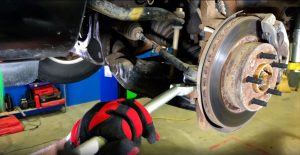
Companies that depend on automobiles for operations in today’s fast-paced business climate confront a variety of difficulties, such as the need for on-time deliveries and growing fuel expenses. Strut condition is one frequently neglected factor of vehicle performance. In addition to improving safety and vehicle economy, proactive strut maintenance is a vital cost-saving measure for companies. The economical benefits of instituting periodic strut repair are examined in this article.
Recognizing Struts and Their Significance
Struts are essential parts of the suspension system that provide a car handling, control, and stability. They keep the tires in touch with the pavement while absorbing shocks and impacts from the road to provide a smooth ride. Poor strut performance may result in a variety of problems, including as uneven tire wear, impaired stopping power, and worse handling overall. Knowing the function of struts highlights the need of routine maintenance as a crucial component of fleet management. Depending on the Auto Repair in Severance, CO based service would be quite useful under the circumstances.
The Unseen Costs of Ignorance
Even while skipping strut maintenance can seem like a little mistake, the hidden expenses can mount up rapidly. In addition to increasing tire wear and fuel consumption, worn-out struts may also put more strain on other car parts. These problems have the potential to need significant repairs down the road, which may be significantly more costly than routine upkeep. Businesses may prevent these skyrocketing costs and the ensuing downtime by arranging regular maintenance and inspections, guaranteeing ongoing operational effectiveness.
Enhanced Efficiency of Vehicles
Vehicle efficiency is directly impacted by routine strut maintenance. Struts that are kept up to date improve handling and stability, which results in more controlled and comfortable rides. This enhancement lowers the risk of accidents, which may lead to expensive insurance premiums and legal action, while also improving driver comfort. Moreover, businesses profit from improved fuel efficiency when cars run well, which lowers one of the biggest running costs related to fleet management.
Stopping Accidents
Frequent strut maintenance greatly lowers the risk of unexpected failures. By taking a proactive stance, technicians may see wear and any problems before they become serious malfunctions. This helps reduce downtime, which is crucial for companies whose operations rely on on-time delivery, as well as the expenses related to emergency repairs. By keeping their fleet of cars in top shape, businesses can maintain their image for dependability, which will encourage client loyalty and maybe lead to an increase in market share.
Improving Security and Adherence
Frequent strut repair not only saves money but also improves car safety. Damaged struts may impair overall control and stopping distances, increasing the possibility of collisions that might have serious financial and legal ramifications. Companies that place a high priority on proactive maintenance show that they care about safety and compliance, which is crucial for safeguarding business property and encouraging employee accountability.






